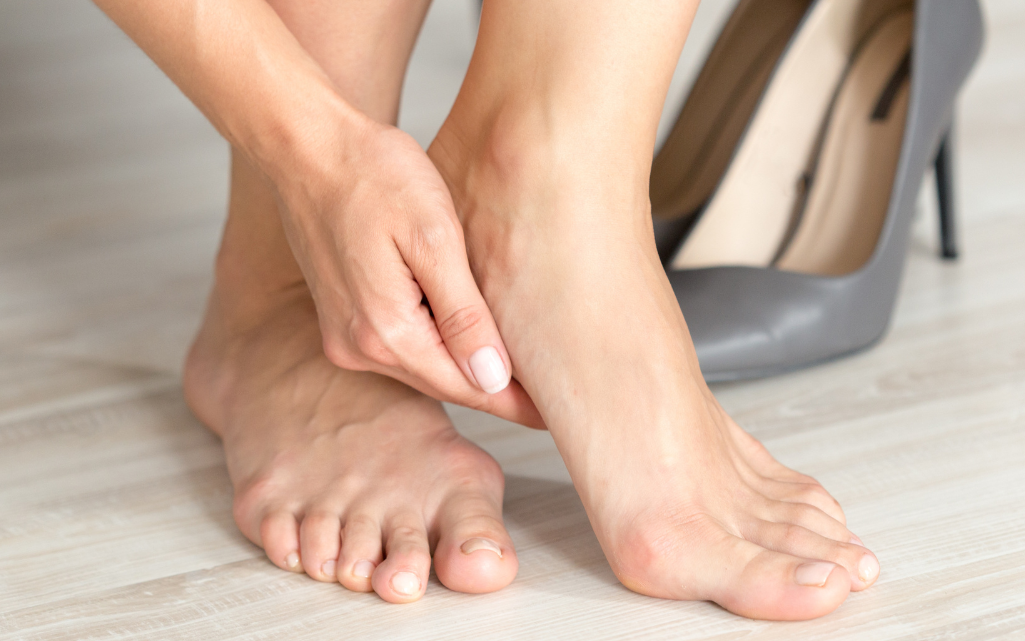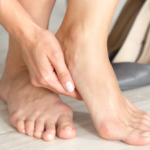Treace Medical Concepts, Inc. established National Bunion Day™ (NBD) in 2024 to educate the public on common misconceptions about the cause of bunions and to highlight the most effective treatment options available.
Around 65 million Americans are affected by bunions.1 While there are many misconceptions that bunions are caused by constrained footwear or standing for long periods of time, the reality is many are caused by hereditary defects or anatomical imbalances of the foot.2
Although bunions might look like a simple bump, they are actually complex deformities caused by an unstable joint in the middle of the foot.3 Bunions will not go away on their own and can worsen overtime if left untreated, making medical intervention necessary for correcting the problem.4
History of National Bunion Day
Treace Medical Concepts, Inc., a prominent figure in the field of foot health in the United States, established National Bunion Day™ in 2024 to educate the public on common misconceptions about the cause of bunions and to highlight the most effective treatment options available. National Bunion Day™ is now recognized on each third Tuesday in April. This day serves as an important opportunity to drive a broader awareness of bunions, their causes and the importance of early intervention for this debilitating bone deformity.
Bunions are a complex and progressive condition that form when bones in the mid-foot slide out of alignment.5 The deformity often runs in families and is frequently marked by a large bump on the side of the big toe.6,7 Bunion pain can significantly impact a patient’s life by restricting the types of activities they can participate in or limiting the types of shoes they can wear. Almost 25% of American adults suffer from bunions and despite common misconceptions, anyone can develop them regardless of their gender or lifestyle.8
Many people living with bunions are reluctant to seek treatment due to the negative reputation associated with conventional surgical correction methods. These procedures often involve a recovery period during which patients are required to refrain from bearing weight on their foot for 7-9 weeks and also pose a nearly 70% risk of bunion recurrence.9,10
Founded in 2014, Treace Medical Concepts, a Ponte Vedra-based medical technology company, developed the Lapiplasty® 3D Bunion Correction® procedure which corrects the underlying cause of bunions by returning the bone to its natural 3D alignment and stabilizing the joint using patented titanium plates. This can help people to get back on their get back on their feet in only a matter of weeks.11,12 The Lapiplasty® Procedure has been performed on more than 130,000 patients since it was first cleared by the U.S. Food & Drug Administration (FDA) in 2016.13
The establishment of National Bunion Day™ in the United States has brought critical attention to this common and disruptive health issue, educated patients about the latest treatment options that can allow them to quickly get back to the activities they enjoy and is helping dismantle the stigma surrounding this condition.
National Bunion Day timeline
Footprints from prehistoric hunter-gatherers show evidence of bunions.
Approximately 27% of burials in and around Cambridge, England during the 14th and 15th centuries show skeletal evidence of bunions.15
Physicians initially believed that hallux valgus involved an enlargement of soft tissue or first metatarsal head caused by ill-fitting shoes.16
Newer techniques begin to rapidly evolve following the introduction of fluoroscopy.17
A team of foot and ankle surgical specialists identify bunion surgery as an area that urgently needs improvement due to high recurrence and complication rates and long recovery times.18
Since the procedure was cleared, more than 130,000 patients have been treated using Lapiplasty®3D Bunion Correction®.20
Foot and ankle specialists and patients from across the country join Treace to recognize the importance of bunion awareness and reduction of stigma surrounding the condition.
REFERENCES
1 Nix S, et al. J Foot Ankle Res. 2010. 27:3:21.
2American College of Foot and Ankle Surgeons (ACFAS) Website ©2024.
3 Dayton P, et al. J Foot Ankle Surg. 2019. 58:427-433.
4 American College of Foot and Ankle Surgeons (ACFAS) Website ©2024.
5 American College of Foot and Ankle Surgeons (ACFAS) Website ©2023.
6 American College of Foot and Ankle Surgeons (ACFAS) Website ©2023.
7 WebMD Website ©2023.
8 Nix S, et al. J Foot Ankle Res. 2010. 27:3:21.
9 Catanzariti AR, et al. J Foot Ankle Surgery, 38:325-32.
10 Jeuken RM, et al. Foot Ankle Int. 2016. 37:687-95.
11 Ray J, et al. Foot Ankle Int. 2019 Aug;40(8):955-960.
12 Dayton P, et al. J Foot Ankle Surg. 2019. 58:427-433.
13 TMC data on file.
14 https://www.nationalgeographic.com/premium/article/bunion-evolution-hallux-valgus-big-toe#:~:text=An%20eternal%20ailment,footwear%20with%20a%20pointed%20tip.
15 https://www.nationalgeographic.com/premium/article/bunion-evolution-hallux-valgus-big-toe#:~:text=An%20eternal%20ailment,footwear%20with%20a%20pointed%20tip.
16 https://pubmed.ncbi.nlm.nih.gov/29855786/
17 New minimally invasive bunion surgery: Easier said than done
Blitz, Neal M.
Foot & Ankle Surgery: Techniques, Reports & Cases, Volume 3, Issue 2, 100288.
18 https://ryortho.com/breaking/treace-medical-receives-lapiplasty-patent/.
19 TMC data on file.
20 TMC data on file.
21 Bunions. American College of Foot and Ankle Surgeons (ACFAS) website. https://www.foothealthfacts.org/conditions/bunions. Accessed March 22, 2024.
How to Observe National Bunion Day
1. Check your feet
Recognizing the early symptoms of a bunion is critical to avoiding long-term discomfort and mobility issues. Monitor your foot health for the following symptoms and consult with a specialist if you experience any of the following:
- A noticeable bump forming at the base of the big toe
- Persistent pain or tenderness around the big toe joint, especially after standing or walking
- Redness, swelling, or stiffness in the affected area
- Difficulty finding comfortable footwear due to changes in foot shape
2. Share your experience
If you are currently living with bunions or had them treated in the past, share your experience on social media using the hashtag, #StandUp2Bunions. This can help reduce the stigma surrounding the condition.
3. Spread the word
Nearly 25% of American adults live with bunion deformities. Help those who are affected by this disruptive condition by sharing accurate information about bunions and treatment options for them.
National Bunion Day FAQs
What is a bunion?
Bunions are more than just a cosmetic bump; they are complex 3D deformities of the foot caused by an unstable joint that has rotated out of alignment. Forming over the course of several years, bunions can be seen as a bump at the base of the big toe and tend to be more bothersome than painful in the beginning. Bunions can be mild, moderate or severe. Everyday occurrences like fitting in your favorite shoes or standing on your feet for extended periods of time may be uncomfortable and aggravate bunions.
What causes bunions?
There are plenty of misconceptions about what causes bunions that we’d like to debunk, especially the myth that bunions are caused by shoes. The truth is: bunions are only aggravated by constrained footwear — not caused by them.
Bunions actually tend to come from hereditary defects in the foot, resulting in a weak mechanical structure. Imbalances of the foot’s anatomical structure are proven to cause bunions as well. Our feet are constantly working to keep our bodies balanced, so any changes in weight or structure can force the bones in our feet to adjust and move. Life experiences such as childbearing or feet expanding as we age can even act as a bunion catalyst. Long story short: once the bones in our feet get out of alignment, trouble can start.
How do I know if I have a bunion?
You might be asking yourself, “Do I have a bunion?” If the bony bump at the inner base of your big toe has been interfering with your daily life, you should look out for other common symptoms such as your big toe deviating towards the other toes, causing the joint to protrude. Restricted movement in the affected area, such as stiffness or numbness, is also another big bunion sign to be aware of. You’ll also notice your symptoms may worsen when your toes are crowded or you’re standing for long periods of time.
How are bunions diagnosed and treated?
The first step in bunion diagnosis is scheduling a consultation with your doctor. During your initial clinical exam, your doctor will X-ray your foot to check the severity of your bunion along with any other conditions, determine the health of your bone stock, and ask you questions about your general health to see if you may be a candidate. They will also answer any questions you might have, so that you feel comfortable with all aspects of correction procedures, including where the surgery will take place, insurance coverage, how to manage postoperative pain, and what to expect in terms of key recovery time points.
What should I do if I think I have a bunion?
If bunion pain is affecting your daily routine, we strongly encourage you to take our short quiz to see if you may be a candidate for Lapiplasty® 3D Bunion Correction® : Am I A Candidate? | Lapiplasty® 3D Bunion Correction®, find a trained surgeon in your local area here.
5 Facts About Bunions
The root cause
Bunions are more than a bump at the base of your big toe. The actual root cause can be found higher up in your mid-foot, an unstable joint that allows your bone to lean, elevate, and rotate out of alignment, creating a complex 3D deformity.
They're progressive
Bunions are a progressive disorder and don’t go away on their own without surgical correction.21
Typical symptoms over time
Bunions are a progressive condition that typically form slowly over the years and can become painful, interfering with normal, daily activities. Typical symptoms of a bunion include a bump on the side or top of the foot, pain, swelling, pressure and numbness.
Additional symptoms if untreated
While conservative treatments such as toe spacers, pads, splints, inserts and orthotics are designed to keep you comfortable, they cannot correct the bunion deformity. If left untreated, bunions can cause additional symptoms, including arthritis, calluses, hammertoes, bone spurs, toes crossing over, and pain in the ball of the foot.
The importance of early evaluations
There used to be a school of thought that you should delay bunion surgery as long as possible. However, now many doctors feel that it is important to receive an evaluation early on, to determine if it’s appropriate for you to consider surgery as other issues may develop as the bunion progresses.
Why National Bunion Day is Important
Bunions can significantly impact one’s quality of life
Bunions are progressive and if left untreated, can cause severe pain, pressure, numbness, swelling and discomfort. Eventually, many patients who suffer from bunions are forced to give up the activities they enjoy and modify their footwear in order to accommodate their bunion deformity.
Bunion myths need to be dispelled
Many people believe that bunions are a simple overgrowth of bone or a “normal” part of the aging process. Because of this assumption, they delay or decide not to seek treatment. However, the condition is actually a complex bone deformity that can only be corrected with surgery.
The stigma surrounding bunions needs to be addressed
There is a common belief that only older women develop bunions. However, the condition can affect anyone, regardless of their age, gender or lifestyle.
National Bunion Day dates
| Year | Date | Day |
|---|---|---|
| 2025 | April 15 | Tuesday |
| 2026 | April 21 | Tuesday |
| 2027 | April 20 | Tuesday |
| 2028 | April 18 | Tuesday |
| 2029 | April 17 | Tuesday |

























